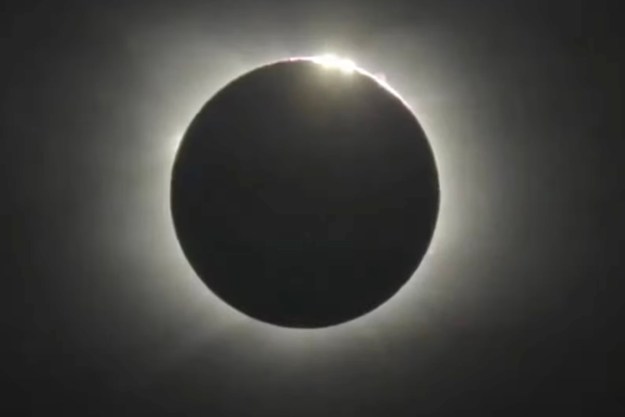Skywatchers across the U.S. will have the chance this week to see a special event: an annular solar eclipse, also known as a “ring of fire” eclipse. The main date to look out for is Saturday, October 14, when people in various locations across the globe will be able to see the event at different times.
If you’d like to watch the eclipse in person, we’ve got advice on how to do that safely. But if you’re after an easier option or you’re located outside of the viewing regions, there’s also a live stream available that will let you watch the event online. More details are below.
What to expect from the Ring of Fire eclipse

A solar eclipse occurs when the moon passes between Earth and the sun, temporarily blocking out the sun’s rays and even making the sky dim during the day. Most eclipses are partial, in which the moon blocks out only a portion of the face of the sun, but this one will be total in some places, meaning the moon will cover most of the face of the sun. Due to the differing distance between the Earth and the moon (the moon’s orbit isn’t perfectly circular, and the eclipse will occur when it is further away than average), the moon will cover around 90% of the sun’s disk.
The remaining 10% of the sun’s disk will continue to shine brightly from behind the moon, creating the ring of fire effect. That’s also why it’s important to view the eclipse safely, as the sun is not completely covered up and looking directly at it can still damage your eyes.
The annular solar eclipse will be visible across North America, Central America, and South America, with the very best view visible from a strip across Texas, New Mexico, and Utah and partial views visible from other locations as well. To find out exactly how much of the eclipse you can expect to see and at what time, you can head to NASA’s interactive map. There’s also a useful table of viewing times for locations in the U.S. at Sky & Telescope.
How to watch the Ring of Fire eclipse
If you’re planning to look for the eclipse in person, it’s important to do so safely. You can get special eclipse glasses for this purpose, but note that these are not the same as sunglasses, so you should ensure they are correctly rated for solar viewing. Another safe option is to use a pinhole camera to observe the eclipse indirectly. A pinhole camera can easily be made at home and is a great project for children.
Alternatively, you can watch the event via live stream. NASA’s live stream will show views from telescopes across the U.S. and will include discussions with experts. Coverage begins at 11:30 a.m. ET (8:30 a.m. PT) and you can watch using the video embedded above.
Editors' Recommendations
- See what the solar eclipse looked like from space
- The first views of the eclipse are coming in, and they’re stunning
- What kind of view will ISS astronauts get of the solar eclipse?
- April’s solar eclipse may produce an unexpected consequence
- How to safely watch April’s total solar eclipse, in person or online



